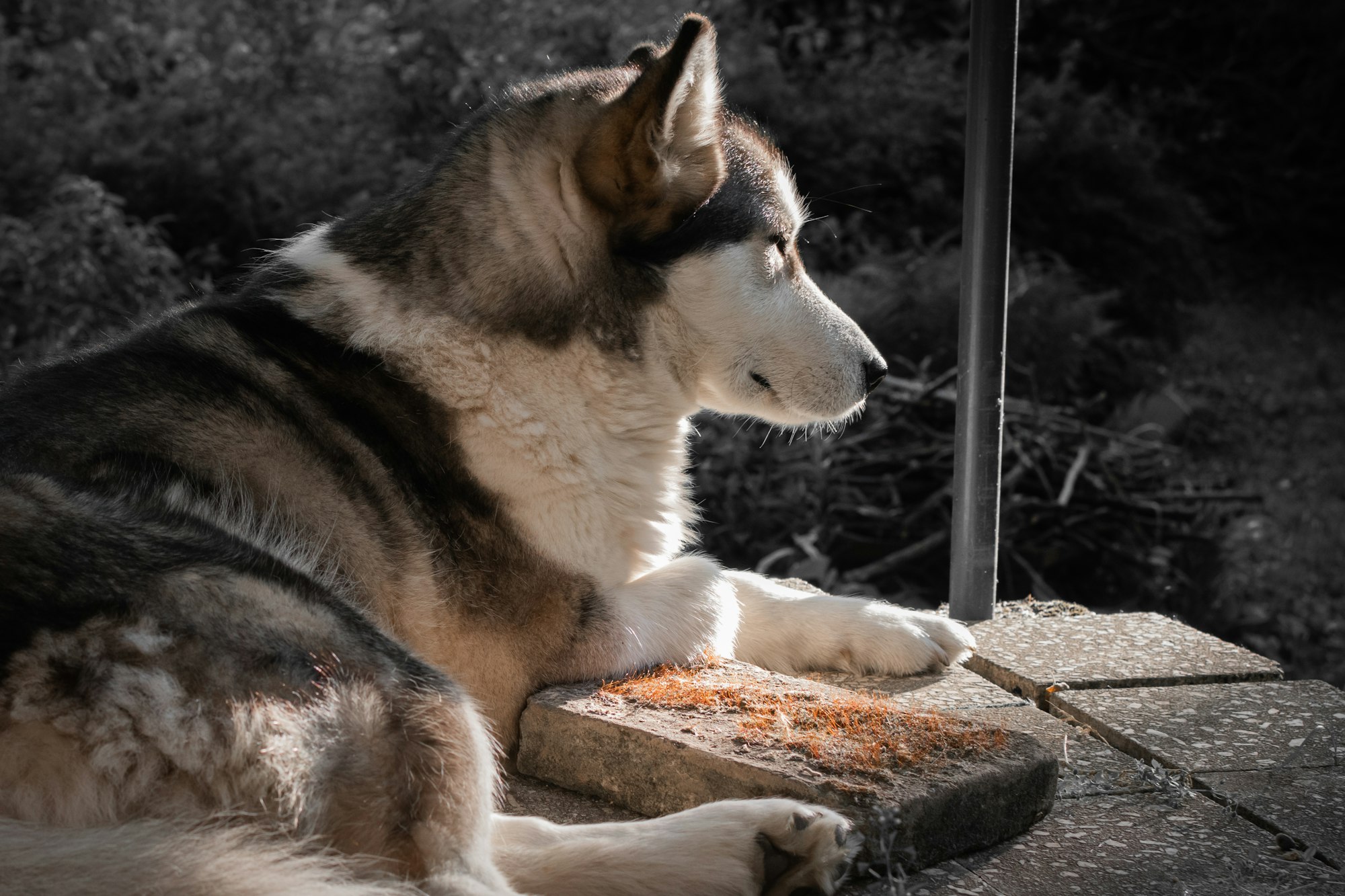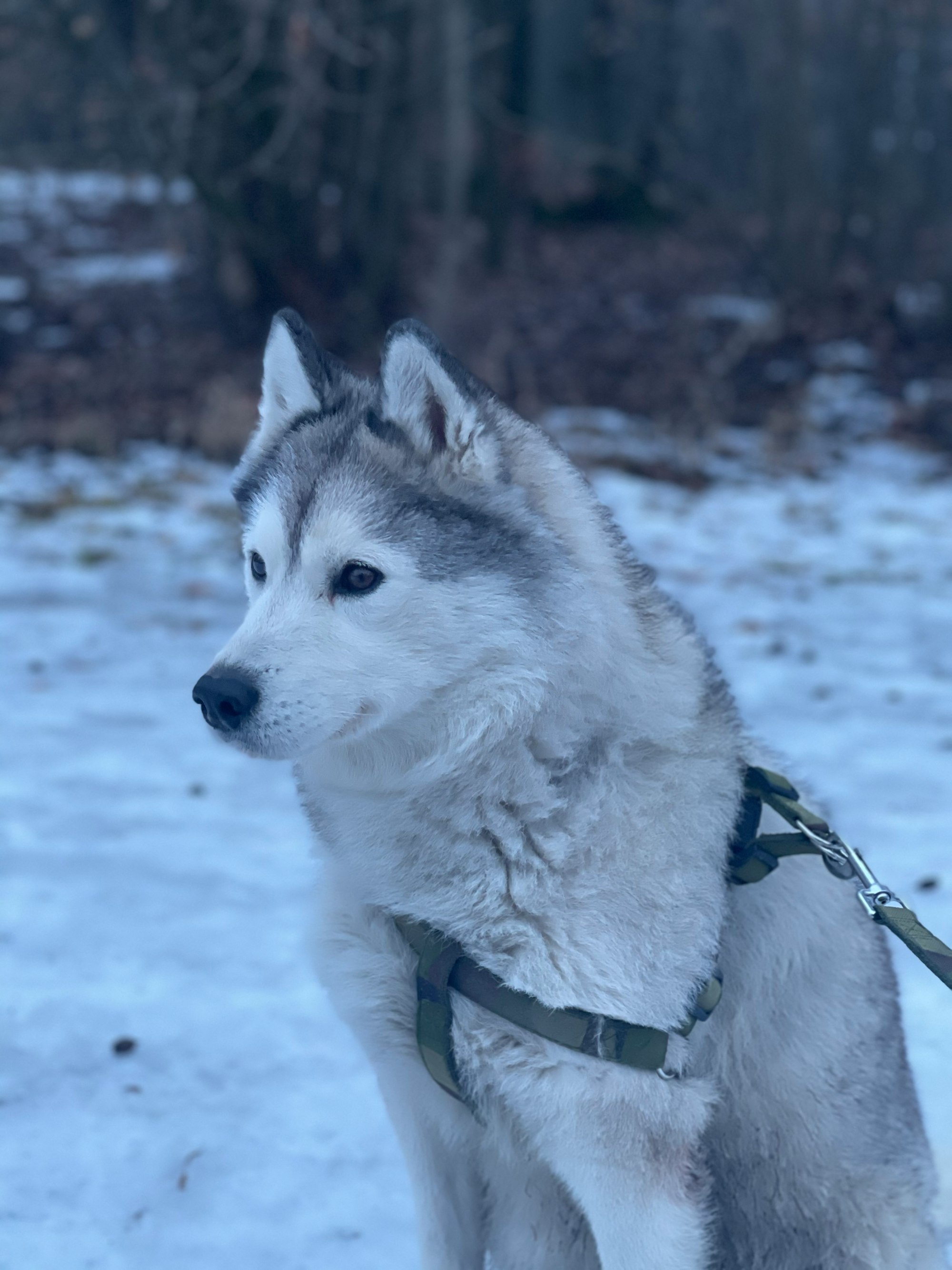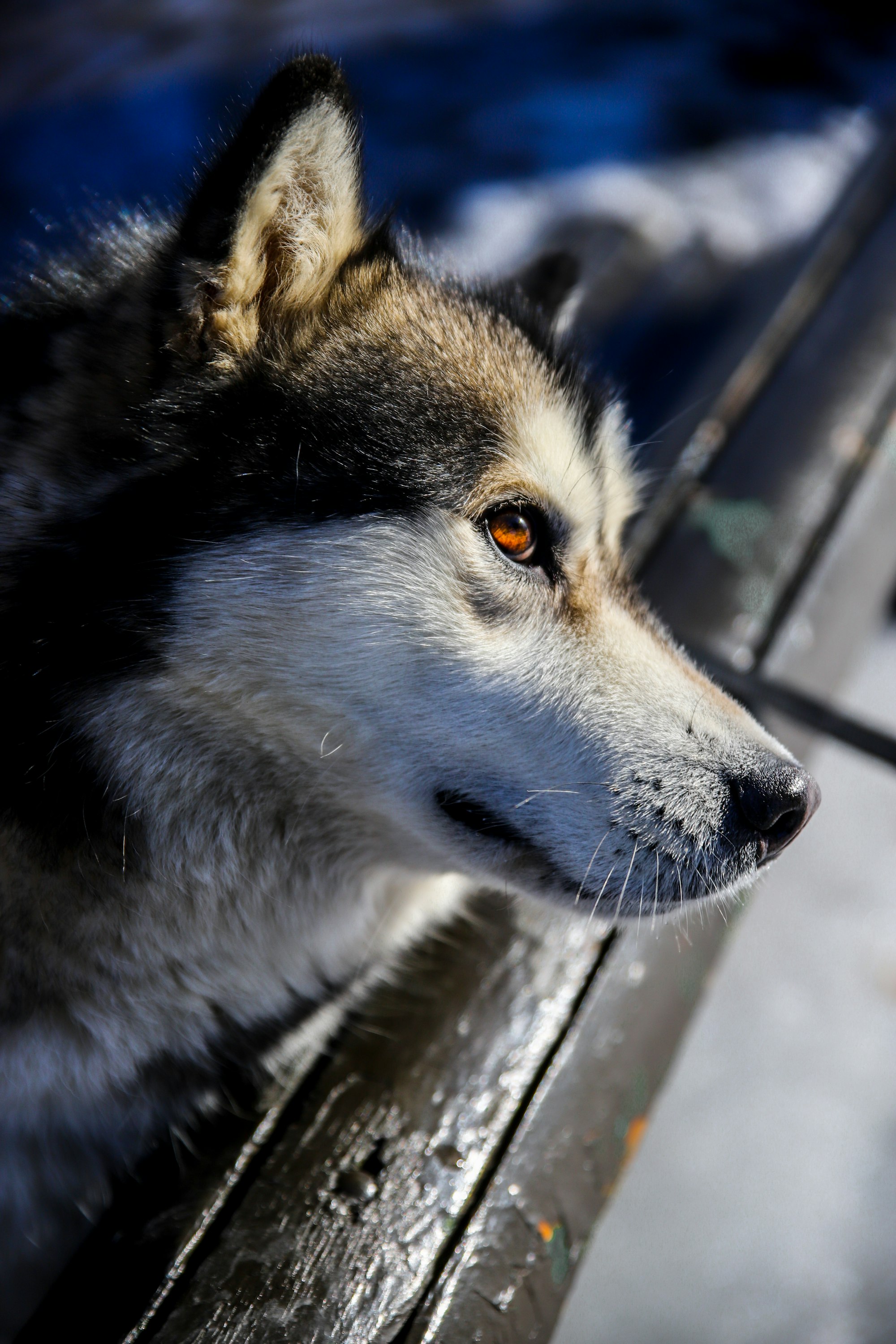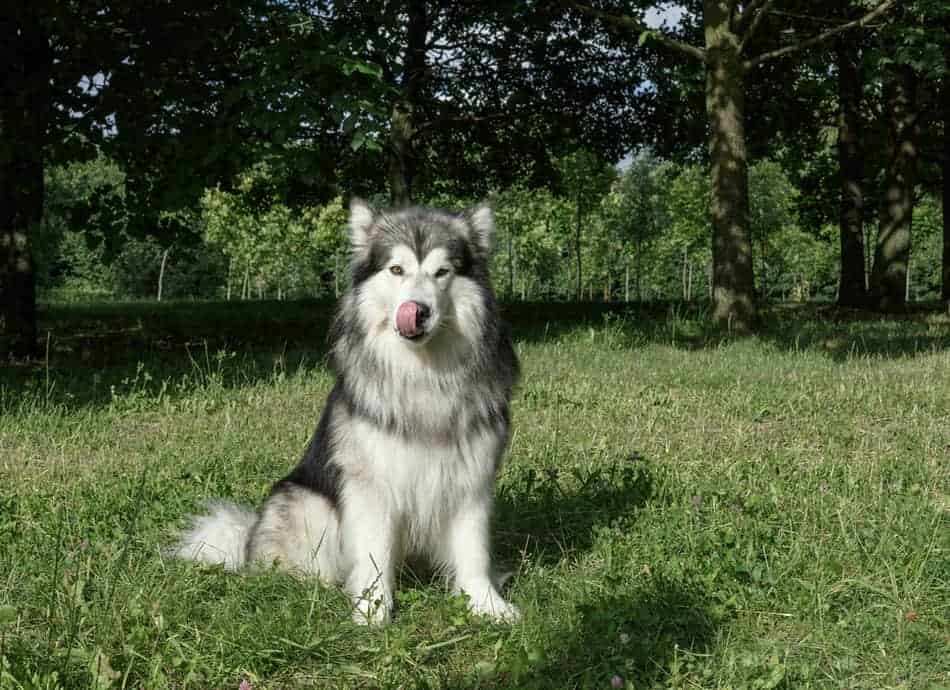Alaskan Malamutes are a large and powerful breed of dog originally bred for hauling heavy freight in the harsh Arctic environment. Due to their size and strength, many people wonder if they make good guard dogs. While Alaskan Malamutes are known for their loyalty and protective nature, their suitability as guard dogs depends on a variety of factors.

One important consideration is the temperament of the individual dog. While Alaskan Malamutes are generally friendly and affectionate with their owners, they can be aloof or even aggressive towards strangers. However, this can be mitigated through proper socialization and training from an early age. Additionally, Alaskan Malamutes are not typically aggressive towards humans unless they perceive a threat, so they may not be the best choice for a guard dog if the goal is to deter intruders.
Alaskan Malamute Temperament
Natural Protective Instincts
Alaskan Malamutes are known for their natural protective instincts. They are loyal and will do whatever it takes to protect their owners and their home. However, it is important to note that they are not aggressive dogs by nature. They will only become aggressive if they feel that their family is in danger.
Territorial Behavior
Malamutes are known to be territorial dogs. They will mark their territory and defend it against any perceived threats. This behavior can be beneficial when it comes to protecting their family and home. However, it can also be a challenge when it comes to introducing new people or animals into their territory.

Response to Strangers
Malamutes can be wary of strangers, especially if they are not properly socialized. They may bark or growl at strangers who approach their home or their family. However, with proper training and socialization, they can learn to distinguish between friend and foe and respond appropriately.
In summary, Alaskan Malamutes have a natural protective instinct and can be good guard dogs. However, their behavior towards strangers and territorial tendencies require proper training and socialization to ensure they respond appropriately in different situations.
Training for Guard Duty
Guard duty is a serious responsibility that requires proper training and preparation. Alaskan Malamutes can make good guard dogs, but they need to be trained properly to fulfill this role. This section will cover the essential training techniques for guard duty.
Obedience Training Essentials
Obedience training is the foundation of any good guard dog's training. Alaskan Malamutes need to be taught basic commands such as ""sit,"" ""stay,"" ""come,"" and ""heel."" This training will help them to be more responsive to their owner's commands, which is essential for effective guarding.
Protection Training Techniques
Protection training is the next step in preparing an Alaskan Malamute for guard duty. This training involves teaching the dog how to protect their owner and property from potential threats. Techniques such as bite work and attack training can be used to teach the dog how to respond to different situations.
It's important to note that protection training should only be done by experienced trainers who know how to train dogs properly. Improper training can lead to aggression and other behavior problems.
Socialization and Behavior Shaping
Socialization is another important aspect of training an Alaskan Malamute for guard duty. The dog needs to be exposed to different people, animals, and environments to help them develop good social skills. This training will help the dog to be more confident and less likely to react aggressively to new situations.
Behavior shaping is also important in preparing an Alaskan Malamute for guard duty. This training involves teaching the dog what behaviors are acceptable and which ones are not. Positive reinforcement techniques such as treats and praise can be used to encourage good behavior.
Overall, training an Alaskan Malamute for guard duty requires a lot of time and effort. It's important to work with an experienced trainer who can help you develop a training plan that is tailored to your dog's needs. With proper training, an Alaskan Malamute can make an excellent guard dog.
Physical Attributes Relevant to Guarding

Size and Strength
Alaskan Malamutes are large and powerful dogs, typically weighing between 75-100 pounds and standing 23-25 inches tall. Their size and strength alone can be intimidating to intruders. They have a broad, sturdy build with a thick coat of fur that can protect them from harsh weather conditions. This build also makes them capable of tackling potential threats head-on.
Bark and Alertness
Alaskan Malamutes have a deep, booming bark that can be heard from a distance. This bark can serve as a warning to potential intruders and can also alert their owners to any potential danger. They are naturally alert and vigilant, always keeping a watchful eye on their surroundings. This combination of bark and alertness can make them an effective deterrent to intruders.
Endurance and Agility
Alaskan Malamutes are bred for endurance and agility. They were originally used as sled dogs and are capable of pulling heavy loads for long distances. This endurance and agility can make them effective at chasing down intruders who attempt to flee. They are also capable of navigating rough terrain, making them well-suited for guarding large properties or rural areas.
Overall, while Alaskan Malamutes may not be the first breed that comes to mind when considering guard dogs, their physical attributes make them capable of serving in this role. Their size and strength, bark and alertness, and endurance and agility all contribute to their potential effectiveness as guard dogs.
Comparison with Traditional Guard Breeds
Alaskan Malamute vs. German Shepherd
German Shepherds are one of the most popular traditional guard dog breeds. They are known for their loyalty, courage, and intelligence. They are also highly trainable and have a strong work ethic. They are often used as police dogs, search and rescue dogs, and military dogs.
Compared to German Shepherds, Alaskan Malamutes are less commonly used as traditional guard dogs. They are known for their strength, endurance, and independence. They are also highly intelligent and have a strong pack mentality. However, they may not be as easily trainable as German Shepherds and may require more patience and consistency.
Alaskan Malamute vs. Rottweiler
Rottweilers are another popular traditional guard dog breed. They are known for their strength, loyalty, and protective nature. They are often used as police dogs, guard dogs, and family pets.
Compared to Rottweilers, Alaskan Malamutes may not be as effective as traditional guard dogs. While they are strong and intelligent, they are not typically bred for guarding or protection. They may also be less aggressive and more independent than Rottweilers, which may make them less suitable for certain guard dog roles.
In conclusion, while Alaskan Malamutes can make great family pets and working dogs, they may not be the best choice for traditional guard dog roles. German Shepherds and Rottweilers are more commonly used and may be better suited for these types of jobs. However, every dog is unique and may excel in different roles depending on their individual temperament and training.
Health and Care Considerations
Exercise Requirements
Alaskan Malamutes are energetic dogs that require plenty of exercise to stay healthy and happy. They need at least 45 minutes of daily exercise, which can include walks, runs, hikes, or playtime in a fenced yard. Without enough exercise, they can become bored and destructive.
Grooming and Maintenance
Alaskan Malamutes have a thick, double coat that needs regular grooming to stay healthy and clean. They shed heavily twice a year and require daily brushing during these periods. They also need their nails trimmed regularly, their teeth brushed at least twice a week, and their ears cleaned to prevent infections.
Common Health Issues
Alaskan Malamutes are generally healthy dogs, but they can be prone to certain health issues. Some of the most common health problems in this breed include hip dysplasia, eye problems, and hypothyroidism. It's important to have your Alaskan Malamute regularly checked by a veterinarian to catch any health issues early on.
Overall, Alaskan Malamutes are great dogs, but they require a lot of care and attention to stay healthy and happy. With proper exercise, grooming, and regular vet check-ups, they can make wonderful companions and even guard dogs.
Choosing the Right Dog for Security

Assessing Your Security Needs
When it comes to choosing a dog for security, it's important to assess your specific needs. Do you need a dog to protect your property from intruders, or are you looking for a dog to accompany you on walks and provide personal protection? It's important to consider the size of your property, your lifestyle, and the potential risks in your area.
Understanding Malamute Behavior
Alaskan Malamutes are known for their loyalty and protective nature, making them a popular choice for security. However, it's important to understand their behavior before choosing one as your guard dog. Malamutes are independent and can be stubborn, which can make them difficult to train. They also have a strong prey drive and may not be suitable for homes with small pets.
Considering a Professional Guard Dog
While Alaskan Malamutes can make great guard dogs, it's important to note that they may not be suitable for all situations. For those who require a higher level of security, it may be worth considering a professional guard dog. These dogs are specially trained to protect their owners and property and are often used by law enforcement and security agencies.
Overall, when choosing a dog for security, it's important to carefully consider your needs and the specific traits of the breed you are interested in. With the right training and socialization, an Alaskan Malamute can make a loyal and effective guard dog.
Frequently Asked Questions
- Q1: How does the Alaskan Malamute's temperament compare to traditional guard dog breeds?
- The Alaskan Malamute is generally known for being friendly, loyal, and affectionate. While they can be protective of their family and territory, they do not have the same level of aggression or intensity as traditional guard dog breeds like German Shepherds or Dobermans. Malamutes are more likely to use their size and strength to intimidate intruders rather than attack them.
- Q2: Can Alaskan Malamutes be trained effectively for protective roles?
- Yes, Alaskan Malamutes can be trained to be effective guard dogs, but it requires proper training and socialization from an early age. Malamutes are intelligent and eager to please, but they can also be independent and stubborn. It's important to work with a professional trainer who has experience with the breed to ensure that the dog is trained in a way that is both effective and safe.

- Q3: What are the differences in guarding instincts between Alaskan Malamutes and Huskies?
- Alaskan Malamutes and Huskies are both sled dog breeds that were originally bred for work rather than protection. While Malamutes can be trained for protective roles, they tend to be more naturally protective than Huskies. Malamutes have a strong pack instinct and are naturally inclined to protect their family and territory. Huskies, on the other hand, are generally friendly and outgoing and may not have the same level of protective instinct.
- Q4: Is the Alaskan Malamute breed considered to be good with families as well as protective?
- Yes, Alaskan Malamutes are known for being good with families. They are loyal and affectionate and often form strong bonds with their owners. While they can be protective of their family and territory, they are generally not aggressive towards people unless they feel threatened.
- Q5: How does the protective nature of a German Shepherd differ from that of an Alaskan Malamute?
- German Shepherds are known for their intense loyalty and protective instincts. They are often used as police dogs and are trained for protective roles. While Alaskan Malamutes can also be trained for protective roles, they tend to be less intense and aggressive than German Shepherds. Malamutes are more likely to use their size and strength to intimidate intruders rather than attack them.
- Q6: What are the key factors to consider when training an Alaskan Malamute for guarding purposes?
- When training an Alaskan Malamute for guarding purposes, it's important to focus on socialization, obedience, and consistency. The dog should be exposed to a variety of people and situations from an early age to help prevent aggression and fearfulness. The dog should also be trained to obey basic commands like ""sit,"" ""stay,"" and ""come"" to ensure that it can be controlled in a variety of situations. Consistency is also important to ensure that the dog understands what is expected of it and can respond appropriately in different situations. Working with a professional trainer who has experience with the breed can be helpful in ensuring that the dog is trained in a way that is both effective and safe.
More articles about Alaskan Malamutes:









